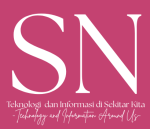In 2025, Windows 11 continues to evolve as Microsoft enhances user experience through sleek design and smarter tools. Yet, even with its polished look, there’s still a layer of functionality most users overlook: a hidden Start Menu packed with power features. This guide dives deep into this secret feature, showing you how to access it, why it’s a game-changer for productivity, and what hidden gems are waiting behind that right-click.
What the Hidden Start Menu in Windows 11?
Windows 11 includes a lesser-known feature called the “Power User Menu” or simply the Hidden Start Menu. It’s a contextual menu offering quick access to essential Windows management tools and settings that are often buried deep in the system. Unlike the default Start Menu, this secret menu is designed for advanced users who need to move quickly between diagnostics, system tools, and control panels.
How to Access the Hidden Start Menu
To access the hidden menu:
- Right-click on the Start button, or
- Press Windows Key + X
This shortcut opens a clean list of utilities without needing to search for them manually. It’s efficient, lightweight, and ideal for power users.
Why Hidden Start Menu Windows 11
With increasing demand for faster workflow navigation, this hidden menu has become more important than ever. System admins, developers, content creators, and gamers all gain from quick access to important tools.
Key Benefits:
- Faster access to system settings and tools
- Avoids unnecessary clicks in the regular Start Menu
- Provides consistent layout across all Windows 11 versions
Tools You Can Launch from the Hidden Start Menu
Once you access this menu, you’ll see a rich list of core system tools, including:
- Windows Terminal: Launch and manage Command Prompt, PowerShell, and Azure Cloud Shell.
- Event Viewer: Analyze system logs, troubleshoot app crashes and system errors.
- Disk Management: Format, partition, or fix storage drives.
- Device Manager: Monitor or update hardware drivers.
- Task Manager: Close background apps, monitor CPU and RAM usage.
- System Information: View your device’s full specs, including BIOS, RAM, and OS details.
- Apps & Features: Uninstall or modify software.
- Run Command: Quickly launch programs, registry edits, or scripts.
All these tools allow a powerful Windows experience that improves productivity.
Why Power Users Love Hidden Start Menu Windows 11
For tech enthusiasts and professionals, time is everything. The hidden Start Menu reduces friction by removing visual clutter and letting users jump straight into what they need.
Popular Use Cases:
- Developers use it to access PowerShell or Windows Terminal instantly.
- IT admins rely on Event Viewer and Device Manager for rapid diagnostics.
- Content creators use Task Manager to monitor performance while rendering.
You’re not just accessing tools faster—you’re working smarter.
Comparing the Default Start Menu vs. Hidden Start Menu Windows 11
| Feature | Default Start Menu | Hidden Start Menu |
|---|---|---|
| Interface | Graphical & app-focused | Text-based utility list |
| Customization | Tiles and Pinned apps | Minimal, not customizable |
| Access Time | Multiple clicks or search | One right-click or Win+X |
| User Level | Casual & general users | Advanced & power users |
| Access to Admin Tools | Limited | Direct access |
The quick access Start tools in this hidden menu offer streamlined navigation that aligns with the professional workflow of experienced users.
How to Customize or Extend This Menu
While you can’t directly add new entries to the Win+X menu using default system settings, third-party tools like Win+X Menu Editor let you:
- Add custom shortcuts
- Remove unused entries
- Reorder tools for convenience
This adds a layer of personalization to your hidden Start menu setup.
Hidden Features Accessible Through the Secret Start Menu in Windows 11
Many users don’t realize the scope of advanced tools in this menu. Some secret Windows 11 settings include:
- Power Options: Modify power plans and sleep settings.
- System: Access system settings including activation and product key.
- Mobility Center (for laptops): Adjust display brightness, switch battery modes, and more.
Using these options, users can optimize performance, fix system errors, or even boost laptop battery life without navigating multiple menus.
How the Hidden Menu Helps Boost Productivity
In 2025, quick command access is key to working efficiently. Whether you’re managing a multi-monitor setup, installing drivers, or resolving performance issues, this menu gives you one-click solutions.
Pro Tips:
- Combine with Run Dialog (Win+R) for full control.
- Use Task Manager to disable startup apps.
- Open System Info to verify RAM or processor specs before installing heavy software.
These advanced Start menu tools can cut tech support and troubleshooting time in half.
Hidden Menu for Gamers, Freelancers & Remote Workers
- Gamers: Disable unnecessary background services for smoother gameplay.
- Freelancers: Manage resource-heavy software and system performance.
- Remote workers: Solve connectivity or system lag via Device Manager or Event Viewer.
The secret menu isn’t just for IT pros—it’s for anyone who wants better control over their machine.
Bonus: Alternative Ways to Access System Tools
Apart from the hidden Start Menu, consider these:
- Search Bar (Windows Key + S)
- Control Panel Shortcuts
- Keyboard shortcuts (Ctrl + Shift + Esc) to open Task Manager
These secondary options enhance your workflow flexibility when the right-click isn’t available.
Final Thoughts: Why You Should Start Using the Hidden Start Menu Today
This secret Start Menu in Windows 11 isn’t just an easter egg—it’s a productivity powerhouse. It offers fast, organized access to tools that help you work smarter, not harder. Whether you’re a professional, student, gamer, or just a curious user, this menu can elevate your Windows experience.
Don’t Wait. Right-click That Start Button.
You might be surprised at what you find—and how much time you save.

